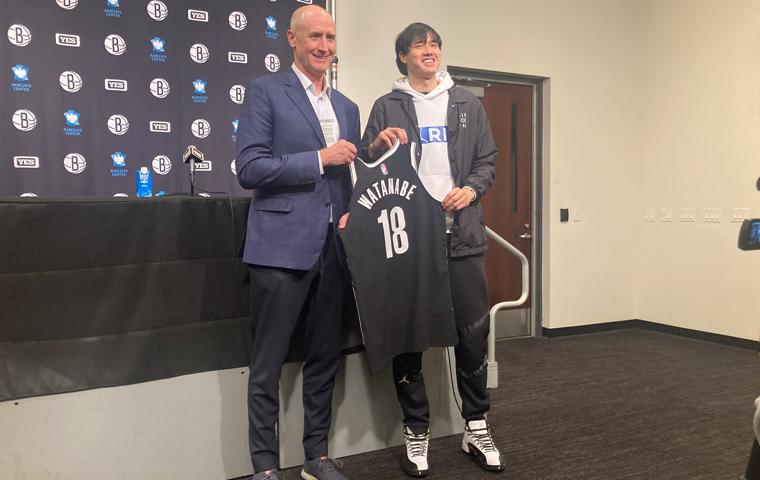Shohei Ohtani, A New Chapter Begins: Arizona Awash in Dodger Blue
Related Articles
The Man with the Biggest Contract in History Gets Going—The World’s Eyes on Arizona
Glendale, Arizona. In February 2025, Camelback Ranch, a baseball complex spread across the dry desert, became the epicenter of the global sports scene. It wasn’t merely the start of another spring training for the Los Angeles Dodgers. It was the moment Shohei Ohtani, who signed the largest contract in pro sports history—$700 million over 10 years (approx. ¥101.5 billion)—first donned Dodger Blue and got to work. Every move he made drew attention from around the world.
On day one, the unusual frenzy began before sunrise. According to a local columnist, many Japanese media outlets had arrived by 7 a.m. Once practice began, Japanese and American reporters swarmed Ohtani—so much so that people described it as a “crush of bodies around the new DH.” Even routine drills—wall throws, catch, conditioning runs—turned into “big events” when Ohtani did them, with countless camera lenses fixed on him. The team quickly imposed media restrictions, a telling sign of just how singular this camp has become.
The fever wasn’t limited to the press. On the day Ohtani threw his first bullpen of camp, more than 1,000 fans had already gathered by 10 a.m., creating in-season levels of buzz. Fans said things like, “Just watching him is amazing,” and, “You can feel the focus and intensity in the air,” valuing not only the practice itself but the atmosphere around it. Even small moments—like greeting new teammates such as Mookie Betts—seared themselves into memory as historic. This “Ohtani Fever” goes far beyond a star player changing teams; it has brought unprecedented attention—and the operational and psychological pressures that come with it—to the entire Dodgers organization. Before Opening Day, the club already faces a new challenge: managing the global phenomenon named Shohei Ohtani.
¥101.5 Billion with a Plan: The “Deferred” Strategy Born of a Hunger to Win

At the root of Arizona’s frenzy is an unprecedented contract that puts a dollar value on Ohtani’s worth. But behind the headline number—$700 million for 10 years—lies a highly strategic architecture that transcends money. The key is an unusual deferred-payment structure: about 97% of the total ($680 million) will be paid after the contract period, from 2034 to 2043. As a result, Ohtani’s annual salary during his 10 Dodgers seasons is just $2 million.
The biggest benefit is how it interacts with MLB’s Competitive Balance Tax (luxury tax). Normally, a $700 million deal would yield an average annual value (AAV) of $70 million for tax purposes. But the deferred structure reportedly reduces the AAV to about $46 million. That ~$24 million difference per year provides immense strategic value, giving the Dodgers the financial flexibility to add other elite players—Yoshinobu Yamamoto, among others—and to build a sustained juggernaut.
Notably, this groundbreaking idea came from Ohtani himself. Backed by massive off-field endorsement income, he prioritized building a roster that can win over his own salary cash flow. In that sense, the contract isn’t just an employment agreement—it’s Ohtani’s first winning play for the Dodgers. Before swinging a bat or throwing a pitch, he raised the team’s odds of winning by signing a structure-friendly deal. It’s a model that redefines superstar contracts: a marquee player as an active strategic partner in team-building, not merely a high-priced piece on the board.
The Roadmap to Two-Way Revival—and a Manager’s Tough Love
On the field, Ohtani’s other story—his return from right elbow surgery—is proceeding steadily. Targeting a pitching comeback during the 2025 season, he has advanced carefully through his rehab phases in spring. Mid-camp, he threw his first bullpen session in front of fans and media: 14 fastballs, marking a strong first step back as a pitcher. Afterward he said candidly, “It’s not as if there’s no discomfort at all,” but added, “I was able to throw with decent output,” and confirmed that his hitting preparation remains on track for Opening Day.
Manager Dave Roberts praised Ohtani’s condition after a live BP: “He looks ready and locked in. He’s in a good place.” On minor tweaks to Ohtani’s pitching motion, Roberts said he wasn’t concerned “at this point,” signaling full confidence in his star. But that trust isn’t built on praise alone—Roberts also offers tough love when needed. Through the media he noted, “Shohei’s swinging a bit too big,” urging a mindset to “hit more doubles”—the home runs will come—to refine Ohtani’s approach. It’s part of a broader team philosophy to reduce strikeouts and maximize efficient scoring, and it shows the intent to optimize even Ohtani to fit that philosophy, without special exceptions. Ohtani’s humble response—“If you want me batting ninth, I’ll bat ninth”—captures his win-first ethos. What’s unfolding in Arizona isn’t just a comeback from injury; it’s the world’s greatest talent being honed even further, in a new environment, toward a single goal: winning.
Chemistry of an MVP Trio: Is the Final Piece in Place for a World Title?

With Ohtani, the Dodgers now center their lineup around a historic trio of MVPs: Mookie Betts, Freddie Freeman, and Shohei Ohtani. Expectations for the synergy of this “MVP Trio” are sky-high inside and outside the clubhouse. New teammate Yoshinobu Yamamoto, witnessing Ohtani’s two-way work, quipped that his “brain can’t keep up.” The jolt Ohtani brings is already palpable.
As a result, the Dodgers enter 2025 as the overwhelming World Series favorites. In an MLB.com expert poll, 64% picked the Dodgers to win it all, with Ohtani pegged as the top candidate for World Series MVP. One analyst called the Dodgers “unstoppable,” describing the roster as a “juggernaut.” Projections echo the hype: MLB.com’s FanGraphs feature forecast 43 HR, 34 SB, 8.1 WAR; Opta AI projected .269 AVG, 37 HR, 42 SB, 8 wins, 3.67 ERA; another outlet went as far as .310 AVG, 50 HR, 25 SB, 7 wins, 3.20 ERA, 8.0 WAR—MVP-caliber numbers.
These outlooks suggest that even while managing the load of a pitching return, Ohtani could still produce elite offensive numbers and contend for MLB’s top overall WAR. Yet the team’s greatest foe might be the sheer weight of its own expectations. As one veteran cautioned, “Having a great roster doesn’t mean you predict 120 wins—there’s no point in that.” The Dodgers’ mission isn’t merely to win; it’s to conquer the massive “they should win” pressure and emerge as true champions. Ohtani joined as the final piece to do exactly that. The frenzy in Arizona is just the prologue to a much larger story that’s about to unfold.



